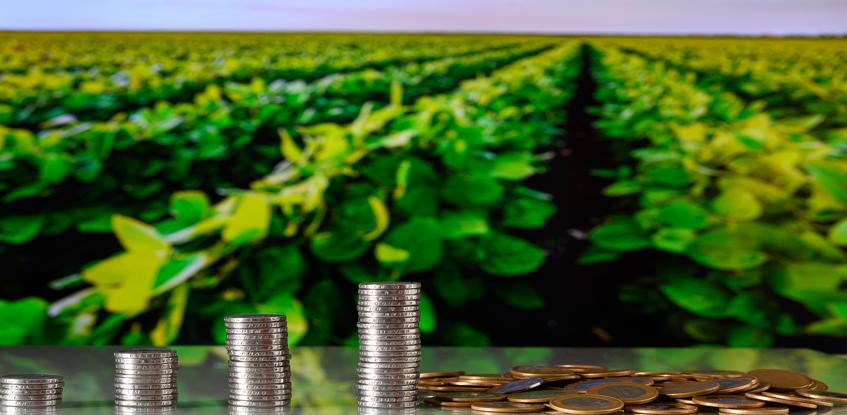Increase in Customs Duties on Agricultural Products and Fertilisers from Russia and Belarus

The European Union is adjusting its customs duties on Russian and Belarusian imports, citing the need to safeguard its food security and internal market.
On 17 June 2025, the European Parliament and the Council of the European Union adopted Regulation (EU) 2025/1227, which modifies the applicable customs duties on certain products originating in or exported from the Russian Federation and the Republic of Belarus. This regulation entered into force the day following its publication in the Official Journal of the European Union.
This new regulation reflects the Union’s intent to address several strategic and economic concerns.
The primary objective is to prevent and reduce the EU’s dependence on Russia for nitrogen-based and urea fertilisers, whose imports have reportedly increased significantly between 2023 and 2024.
Beyond fertilisers, the regulation also targets a wide range of agricultural products. Although current import levels remain relatively low, the EU institutions have warned that these volumes could rise sharply if current trade conditions persist, potentially creating a new dependency risk.
By limiting this exposure, the Union aims to protect its agricultural market and preserve its food sovereignty.
The recitals of the regulation also highlight the EU’s concern over its potential vulnerability to coercive measures by the Russian Federation if imports were to continue under current conditions.
Belarus is equally targeted due to its close political and economic alignment with Russia, notably through a shared customs union. The regulation seeks to prevent the circumvention of EU measures by routing Russian goods through Belarusian territory.
The regulation introduces higher tariffs than those previously applied under the Most-Favoured Nation (MFN) principle, which until now varied widely — with some duties at zero or very low levels.
As a reminder, the MFN clause is a non-discrimination rule included in many international trade treaties. It grants a country the same trading advantages — such as reduced tariffs — as those offered to any other nation. The clause is embedded in the World Trade Organization (WTO) framework, and any concession made to one WTO member must automatically extend to all other members.
As a result, under the new regulation, products originating in or exported from Russia or Belarus will no longer benefit from preferential import duties under EU tariff quotas, including those provided for under WTO agreements.
The regulation targets two categories of products:
1. Agricultural and other miscellaneous products listed in Annex I of the regulation: these products, identified by Combined Nomenclature (CN) codes, will be subject to an additional ad valorem duty of 50% — in other words, 50% of the product’s value — on top of existing tariffs under the Common Customs Tariff. This measure will apply from 20 July 2025. The Annex I list includes, among others, live animals, meat, dairy products, cereals (such as oats, rice, triticale), vegetable and animal oils, sugars, food preparations, and by-products from the food industry.
2. Fertilisers listed in Annex II: for mineral or nitrogen-based chemical fertilisers (CN code 3102) and certain other fertilisers (CN codes 3105), specific customs duties are introduced and will increase progressively over several years. For example, products under CN code 3102 will be subject to a duty of 6.5% ad valorem + EUR 40/tonne from 1 July 2025 to 30 June 2026, rising to 6.5% ad valorem + EUR 315/tonne from 1 July 2028.
Additionally, if cumulative import volumes exceed certain thresholds, the European Commission will impose the highest tariff rate (e.g., EUR 315/tonne for code 3102) on all remaining imports during that period.
The EU justifies these measures under international law. Although Russia is a WTO member, the Union may derogate from MFN obligations when necessary to protect essential security interests. Since Belarus is not a WTO member, the EU is not bound to grant it MFN treatment, and existing trade agreements allow for measures based on security exceptions.
The increase in customs duties is not expected to negatively impact global food security. The measure applies only to imports into the Union and does not affect goods in transit to third countries. On the contrary, it may redirect some exports to other markets, potentially improving global supply availability.
Nonetheless, recognising the importance of fertilisers for food production and the financial stability of EU farmers, the European Commission will closely monitor fertiliser prices within the Union over a four-year period beginning 21 June 2025. Should prices rise significantly above 2024 levels, the Commission will assess the situation and may adopt appropriate measures, including a proposal to temporarily suspend tariffs on fertiliser imports from alternative sources.
According to the EU, this regulation is both necessary and proportionate to achieve its objectives. The Council describes it as an important step toward strengthening the Union’s economic autonomy and security, in a broader context of deteriorating relations with Russia and Belarus.
However, beyond this targeted response to external threats, the regulation may also represent an additional burden for EU farmers. They are already facing intense competition, rising costs for key inputs like fertilisers — despite the regulation’s aim to stabilise the market by reducing dependency — and increasingly stringent environmental and regulatory requirements.
Recent controversies, particularly in France, over the ban of certain insecticides — such as neonicotinoids in sugar beet farming or glyphosate — highlight the delicate balance EU farmers must strike: adapting to tighter environmental standards while dealing with shrinking margins and costlier inputs.
Latest news
Harmonisation and Clarification of the EU Sanctions Regime: Insertion of the Concepts of “Ownership” and “Control”
Pursuant to Article 2 of Regulation (EU) No 269/2014, concerning restrictive measures in respect of actions undermining or threatening the territorial integrity, sovereignty and independence of Ukraine, natural or legal persons designated in Annex I to that Regulation are subject to the freezing of all funds and economic resources belonging to them. It is also… Continue reading Harmonisation and Clarification of the EU Sanctions Regime: Insertion of the Concepts of “Ownership” and “Control”
Political communication on tax matters, first lesson: Present as exceptional what is meant to become structural.
Nearly fifteen years ago, the 2012 Finance Act introduced an apparently temporary tax, the Exceptional Contribution on High Incomes (CEHR), conceived “in a context of reducing public deficits and restoring our public finances,” intended “to request an exceptional effort from the wealthiest taxpayers.”¹

Maximilien Dechamps joins EQA
EQA Avocats is pleased to announce the arrival of Maximilien Dechamps. Maximilien advises companies and individuals on the optimal structuring of their professional and private assets, both in France and internationally. He also provides guidance during tax audits and disputes, representing and advising clients in the negotiation and conclusion of transactions with tax authorities. Maximilien… Continue reading Maximilien Dechamps joins EQA

EQA Avocats Forms Strategic Alliance with Belgravia Law
We are pleased to announce the formation of a strategic partnership between EQA AVOCATS and BELGRAVIA LAW, an independent London-based law firm. BELGRAVIA LAW is recognized not only for its strategic approach and responsiveness but also for its expertise in cross-border litigation, international arbitration, and M&A. This partnership spans the jurisdictions of Paris, London, and… Continue reading EQA Avocats Forms Strategic Alliance with Belgravia Law




